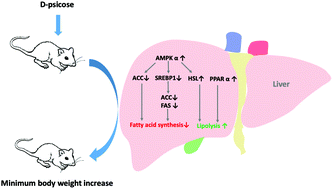Anti-obesity potential of rare sugar d-psicose by regulating lipid metabolism in rats
Abstract
D-Psicose is a new-generation sugar substitute with a low calorie count and can still offer the desirable sweetness. The objective of this study was to investigate the antiobesity potential of D-psicose and the possible mechanism using Wistar rats as the animal model. The animals were divided into five groups and supplemented with diets containing 5% of different carbohydrates, such as glucose, fructose, cellulose, D-psicose, and a control diet, for 4 weeks. After sacrifice, blood lipid profile, tissue morphology, and related genes participating in lipid metabolism were analyzed. The results indicated that the supplementation by D-psicose leads to minimum fat accumulation in rats when compared with the other carbohydrates. The blood lipid profile and antioxidative activity of the rat were also improved. D-Psicose can regulate lipid metabolism by increasing the lipid-metabolism-related enzymes such as SDH in serum and liver and HL in the liver. D-Psicose can prevent fat accumulation by suppressing the expression of lipogenesis-related gene ACCα and hepatic fatty acid uptake gene (FAS and SREBP-1c), while stimulating the expression for fatty-acid-oxidation-related gene including AMPK2α, HSL, and PPARα. In conclusion, D-psicose can be considered to be a healthy alternative to traditional sweeteners.



 Please wait while we load your content...
Please wait while we load your content...